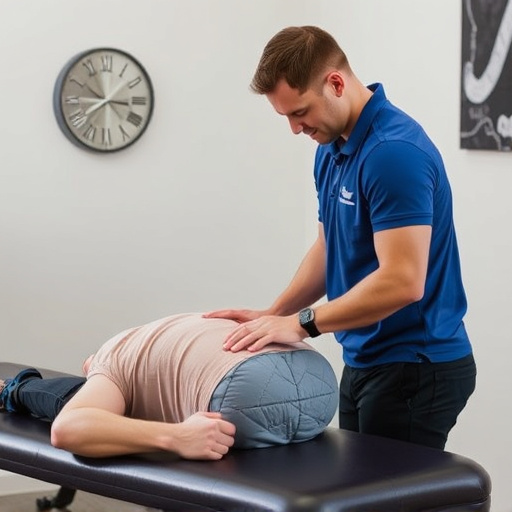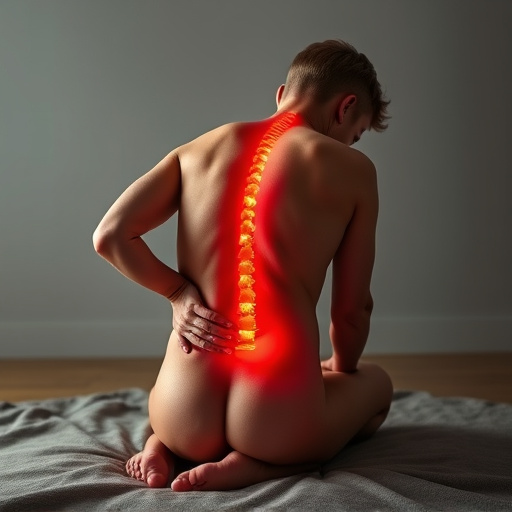Tech workers face ergonomic injuries from prolonged sitting, repetitive tasks, and improper workstations. Employers should promote wellness with well-designed equipment, training, and post-injury care education to prevent conditions like carpal tunnel syndrome and back pain. Accurate diagnosis involves patient history, physicals, specialized tests, and work environment assessments. Treatment includes tailored interventions like shockwave therapy, and prevention strategies involve ergonomic equipment, exercise, and professional guidance to reduce musculoskeletal disorders.
Tech-related ergonomic injuries are on the rise due to prolonged screen time and sedentary work patterns. This article explores comprehensive solutions for managing and preventing such conditions. We delve into the root causes of ergonomic injuries in tech workplaces, emphasizing the importance of accurate diagnosis and assessment. By understanding specific pain points, tailored treatment strategies can be implemented. Additionally, we offer preventative measures focused on postural improvements, equipment upgrades, and work-life balance adjustments to eliminate tech-related strain conditions effectively.
- Understanding Ergonomic Injury Causes in Tech Workplaces
- Diagnosis and Assessment for Effective Treatment Strategies
- Preventative Measures: Eradicating Tech-Related Strain Conditions
Understanding Ergonomic Injury Causes in Tech Workplaces

Ergonomic injuries in tech workplaces are increasingly common due to prolonged periods spent sitting at desks, repetitive tasks, and improper workstation setups. These conditions often stem from a combination of factors: inadequate ergonomics, poor posture, and a lack of regular breaks. Workers may experience strain on their eyes, wrists, or back, leading to conditions like carpal tunnel syndrome, tendonitis, or chronic lower back pain.
To mitigate these issues, employers should prioritize ergonomic injury treatment by fostering a culture of wellness care. This involves ensuring employees have access to well-designed workstations that promote proper posture and reduce physical strain. Additionally, regular training sessions on ergonomic principles and the importance of post-injury care can help prevent and manage tech-related strain conditions effectively.
Diagnosis and Assessment for Effective Treatment Strategies

An accurate diagnosis and comprehensive assessment are pivotal steps in developing effective ergonomic injury treatment strategies for tech-related strain conditions. Healthcare professionals employ a multifaceted approach to understand the root causes behind symptoms like neck pain relief, which could range from muscular imbalances to poor posture or repetitive motions. This involves gathering detailed patient history, conducting physical examinations, and utilizing specialized tests to identify specific areas of concern.
Assessments may include postural analysis, joint mobility testing, nerve conduction studies, or even imaging techniques such as X-rays or MRI scans to rule out more severe conditions. By thoroughly evaluating the individual’s work environment, tasks performed, and habitual behaviors, healthcare providers can pinpoint contributing factors and design tailored interventions, including shockwave therapy for specific injuries, and sports injury treatment protocols to alleviate discomfort and prevent recurring issues.
Preventative Measures: Eradicating Tech-Related Strain Conditions

Preventative measures are key to eradicating tech-related strain conditions and managing ergonomic injuries caused by prolonged screen time. Beyond adopting proper posture and taking regular breaks, individuals can implement several strategies to reduce their risk of developing musculoskeletal disorders associated with technology use. Customized ergonomic equipment tailored to individual needs, such as adjustable desks or specialized keyboards and mice, can significantly alleviate strain on the body.
Additionally, incorporating regular physical activity into daily routines promotes muscle strength and flexibility, enhancing overall postural stability. Engaging in activities that target core muscles, improve grip strength, and foster joint mobility can be particularly beneficial in preventing tech-related injuries. Furthermore, seeking professional guidance from a chiropractor or enrolling in comprehensive rehab services focused on post accident rehabilitation can provide individuals with valuable tools and techniques to manage pain, restore function, and prevent future ergonomic injuries.
Ergonomic injury treatment is essential for addressing tech-related strain conditions, which have become increasingly prevalent in today’s digital era. By understanding the causes, implementing effective diagnosis and assessment strategies, and adopting preventative measures, workplaces can significantly reduce the risk of these injuries. Prioritizing employee wellness through ergonomic interventions not only enhances productivity but also ensures a safer and more comfortable work environment for all tech professionals.














